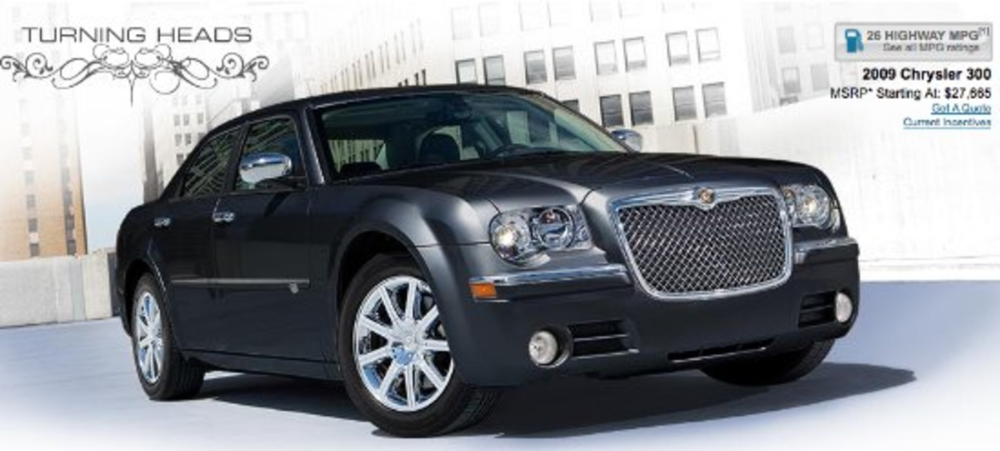General Motors‘ filing for bankruptcy on June 1, drove home the fact that the US auto industry had hit a tipping point. Faced with bankruptcies, wary consumers and an ongoing recession, auto companies have to rethink every piece of their business strategy, including marketing plans.
There’s no doubt that GM and Chrysler — both of which have filed for bankruptcy — will see their marketing budgets slashed this year. In fact, at the beginning of May, the US Treasury’s auto industry task force chopped the bankrupt Chrysler’s advertising budget in half — from $134 million to $67 million for the nine week period during which the company was overhauling. Even with budgets getting sliced, marketing remains a necessary part of any automaker’s business strategy. The question now is not whether automakers will spend to promote their brands, but whether they will stick to their old, traditional-media-heavy strategies or move their marketing dollars to more nimble online media.
“To say they are going to stop advertising is pretty unrealistic, but there are certainly going to be cutbacks,” noted Brett Smith, director of automotive analysis, Center for Automotive Research. “The next big step will be a significant redistribution of where [the marketing dollars are] going. There is a lot of uncertainty as to how it will be redistributed.”
“We’re definitely seeing compressed marketing budgets overall,” agreed Tim Longnecker, industry executive for Acxiom‘s automotive business. Unlike Smith, Longnecker sees a definite trend in the migration of ad dollars. “Of the reduced marketing budgets, we are seeing increases in more targeted direct marketing strategies, whether direct marketing in the traditional sense or online with Web and e-mail, and, more recently, moving into the whole social space,” he said.
Budget-friendly online tactics seem like an obvious approach for marketers with stretched budgets, and many car dealers are embarking on new social media ventures as a simple way to boost their brand images.
GM, for example, recently launched a site called GMReinvention.com, which offers videos and articles on its restructuring while guiding consumers to connect with the brand on Facebook, Flickr and Twitter.
“They took a move out of the playbook of what Ford had already done with TheFordStory.com, and also what President Obama has been doing with his social media efforts,” said Jeremiah Owyang, an analyst at Forrester Research. “The government has been pushing these car companies to be more open and accountable, and I think that the main goal for them is to tell the world that they are open and transparent and to ask consumers to join in the conversation.”
According to Owyang, this approach is really about branding. “This is not necessarily going to change the way that people buy cars but it is intended to change the perception of the brand, this is a branding push,” he said.
In a move that supports Owyang’s theory, Fritz Henderson, president and CEO of GM, wrote in the company’s “FastLane” blog on June 1, the day that GM filed for bankruptcy protection: “We’re committed to open communications and I am personally putting a high priority on transparency. One way we’ll do this is by launching [on Thursday, June 4] a series of live web chats on this Web site.
“Above all,” he added, “the New GM will be rededicated to our customers. We don’t do that by working in a bubble. We do it by engaging with you, our customers and critics, our partners and champions, who are interested in our progress.”
Although social media and other “soft” outreach like blogging can do a lot for a company’s image, it will take a little more investment to drive real sales. Because TV advertising remains expensive, digital efforts are becoming more attractive to many car companies.
“[Auto companies] can no longer afford these big Super Bowl ads and Academy Awards sponsorships, but while everything else is getting cut digital budgets are increasing,” said David Wolk, president of Goodway Group. The company owns auto ad network Beep!, which works with GM, Ford, Chrysler and Toyota.
According to Wolk, the digital budgets are prioritized as follows: search, ads on third party auto sites such as Edmunds or Cars.com, ad networks and then e-mail.
“Automotive companies like digital, because everything is measurable,” Wolk concluded. “This is the perfect environment for digital to grow dramatically.”
In fact, Longnecker said, digital was gaining popularity among auto makers even before the economic crisis. The pressure created by the recession simply accelerated the trend.
“Every marketer is looking for higher return on investment and at same time trying to figure out how to target specific consumers and prospects, so the whole transition from more mass marketing to a more targeted, direct approach is something we’ve seen for a while now,” he said. “But it is actually accelerating as the industry is working through the issues.”








